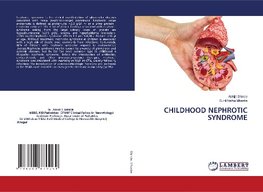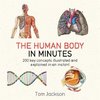
-
 Anglický jazyk
Anglický jazyk
CHILDHOOD NEPHROTIC SYNDROME
Autor: Abhijit Shinde
Nephrotic syndrome is the clinical manifestation of glomerular diseases associated with heavy (nephrotic-range) proteinuria. Nephrotic range proteinuria is defined as proteinuria >3.5 g/24 hr or a urine protein : creatinine ratio >2. The triad of clinical... Viac o knihe
Na objednávku
50.85 €
bežná cena: 56.50 €
O knihe
Nephrotic syndrome is the clinical manifestation of glomerular diseases associated with heavy (nephrotic-range) proteinuria. Nephrotic range proteinuria is defined as proteinuria >3.5 g/24 hr or a urine protein : creatinine ratio >2. The triad of clinical findings associated with nephrotic syndrome arising from the large urinary losses of protein are hypoalbuminemia (=2.5 g/dL), edema, and hyperlipidemia (cholesterol >200 mg/dL).Nephrotic syndrome affects 1-3 per 100,000 children <16 yr of age. Without treatment, nephrotic syndrome in children is associated with a high risk of death, most commonly from infections. Fortunately, 80% of children with nephrotic syndrome respond to corticosteroid therapy.Nephrotic syndrome may be caused by a variety of glomerular and systemic diseases, but by far the most common type in childhood is idiopathic nephrotic syndrome. Before the introduction of antibiotics, corticosteroids, and other immunosuppressive therapies, nephrotic syndrome was associated with mortality as high as 67%, usually following infections.The introduction of adrenocorticotropic hormone and cortisone in the 1950s contributed to an even greater decrease in mortality (to 9%).
>3.5 g/24 hr or a urine protein : creatinine ratio >2. The triad of clinical findings associated with nephrotic syndrome arising from the large urinary losses of protein are hypoalbuminemia (=2.5 g/dL), edema, and hyperlipidemia (cholesterol >200 mg/dL).Nephrotic syndrome affects 1-3 per 100,000 children <16 yr of age. Without treatment, nephrotic syndrome in children is associated with a high risk of death, most commonly from infections. Fortunately, 80% of children with nephrotic syndrome respond to corticosteroid therapy.Nephrotic syndrome may be caused by a variety of glomerular and systemic diseases, but by far the most common type in childhood is idiopathic nephrotic syndrome. Before the introduction of antibiotics, corticosteroids, and other immunosuppressive therapies, nephrotic syndrome was associated with mortality as high as 67%, usually following infections.The introduction of adrenocorticotropic hormone and cortisone in the 1950s contributed to an even greater decrease in mortality (to 9%).
- Vydavateľstvo: LAP LAMBERT Academic Publishing
- Rok vydania: 2021
- Formát: Paperback
- Rozmer: 220 x 150 mm
- Jazyk: Anglický jazyk
- ISBN: 9786203870169












